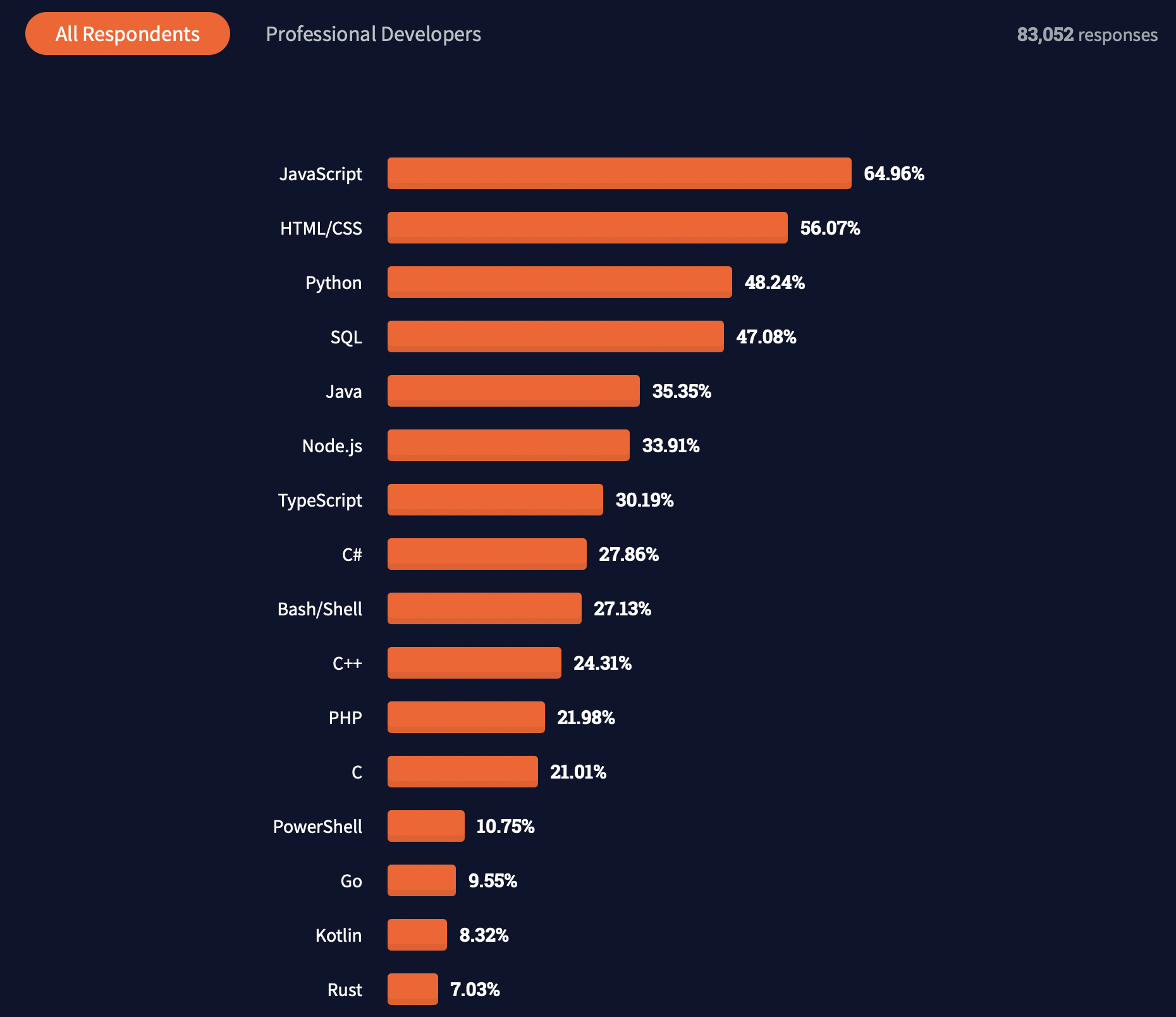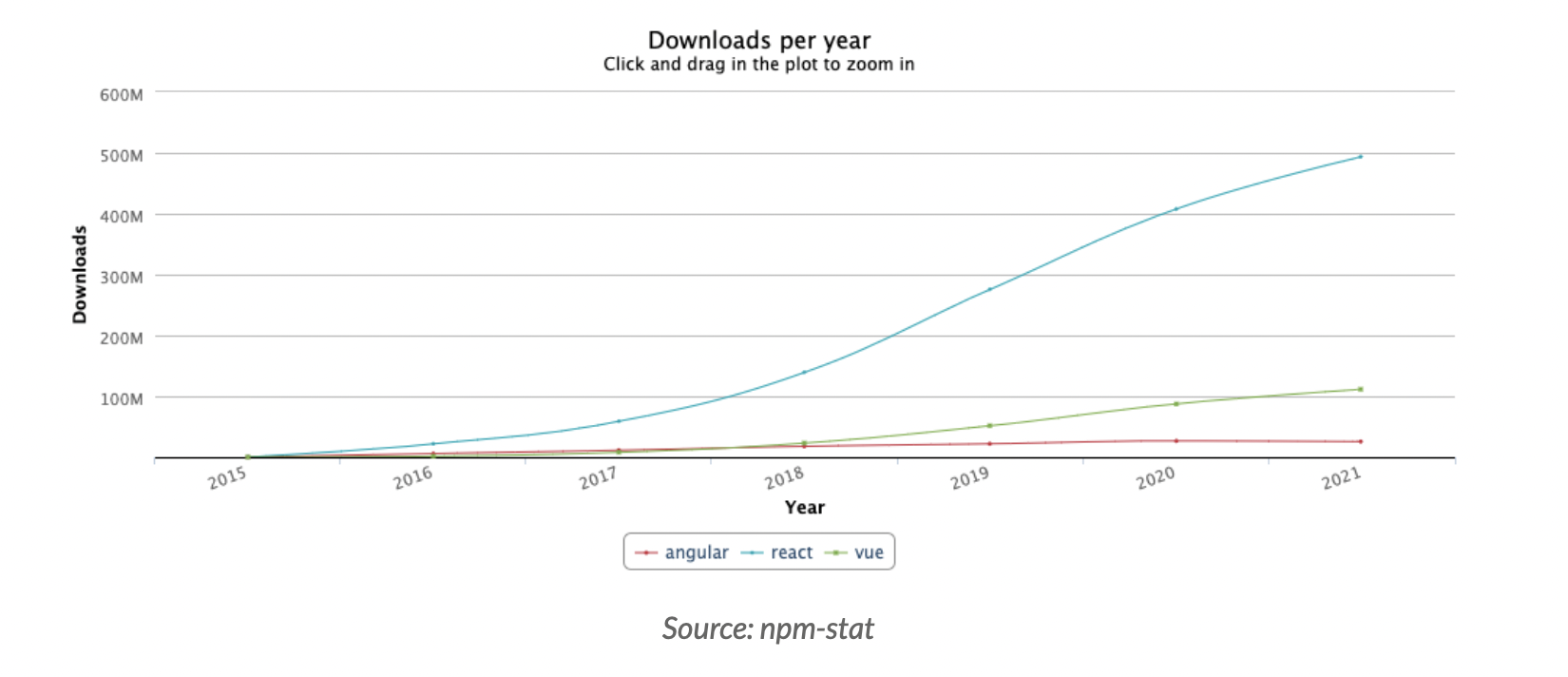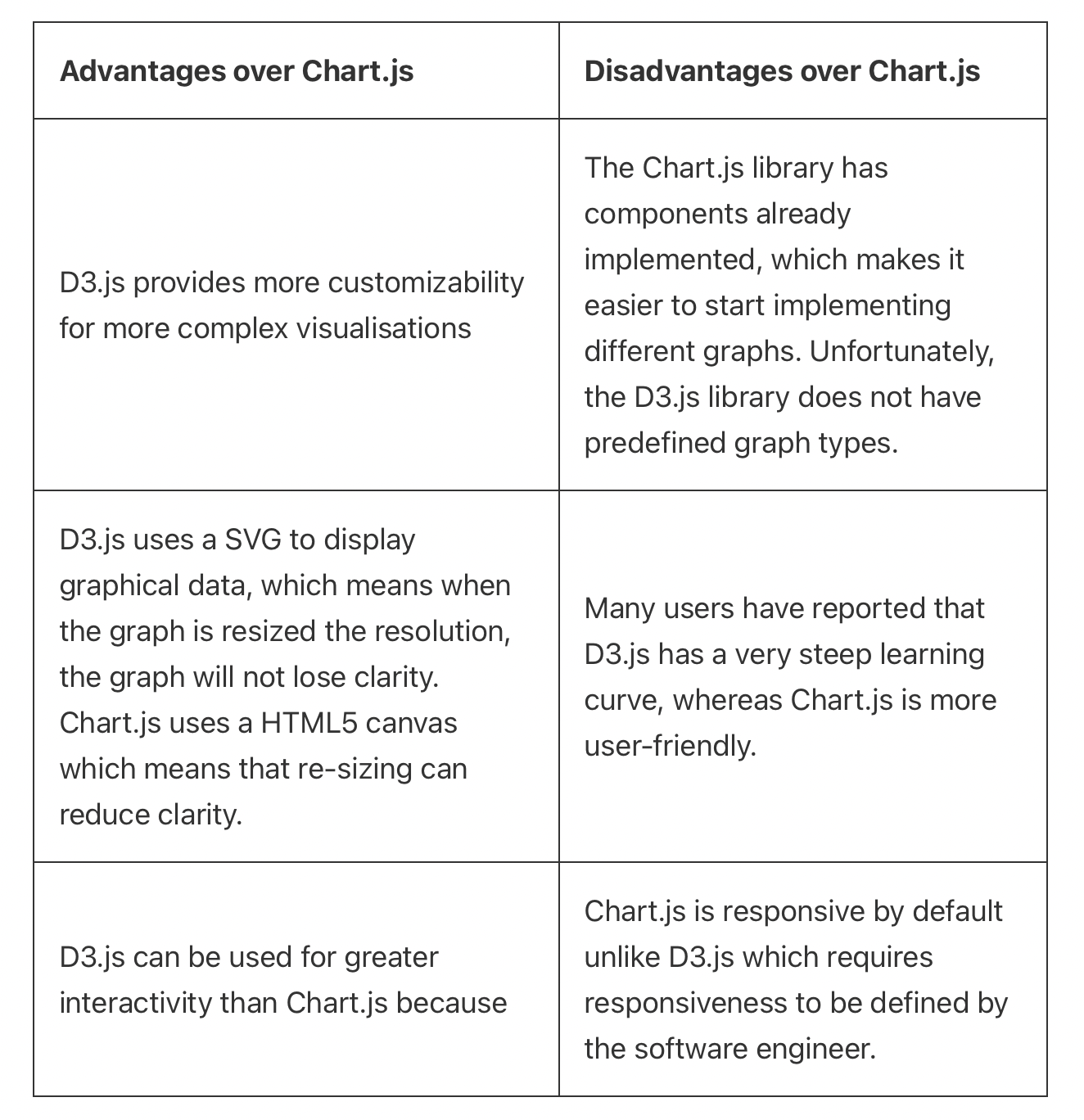TECHNOLOGY REVIEW
WEB DEVELOPMENT PROGRAMMING LANGUAGE
Since our client is inclined towards creating an online accesible web application, it is important for us to ensure that most devices can support the running of our program. For creating such web application, we have a few choices of programming languages
to be used to structure our project. After doing our own research, we narrowed down the possible languages to two: JavaScript and Python. However, after further discussions, our team decided to go forward with JavaScript. The reason why
we did not choose Python was because it is a backend server-side programming language. This being said, Python cannot be utilised on its own because it needs to work with requests involving HTML, CSS and even JavaScript
[5]. Additionally, even with the existance of frameworks for website development using Python such as Django available, it will be a steep learning curve for us to easily code using Python. Finally,
the performance of websites created using Python may be poor because of its slower speed in comparison to JavaScript [6].
On the other hand, JavaScript is generally a more popular choice of programming language used in web development (web-dev). Based on a 2021 survey carried out by Stack Overflow, out of 83,052 respondents, about 65 percent of them use JavaScript as their main language for web-dev [7]. As such, it is easier for us to gain help from the community in case we encounter any problem during development. Also, JavaScript has the advantage of speed, which is useful to save time of the clinicians using our platform. The image below depicts the statistics mentioned above [7].
Finally, we have decided to develop or project using JavaScript because of all the possible benefits and convenience that we can gain by its usage. Not to forget, since this is a legacy project written mostly in JavaScript, it would be hard for us to rewrite all of the exisiting code using another language as this will consume a lot of our time.

On the other hand, JavaScript is generally a more popular choice of programming language used in web development (web-dev). Based on a 2021 survey carried out by Stack Overflow, out of 83,052 respondents, about 65 percent of them use JavaScript as their main language for web-dev [7]. As such, it is easier for us to gain help from the community in case we encounter any problem during development. Also, JavaScript has the advantage of speed, which is useful to save time of the clinicians using our platform. The image below depicts the statistics mentioned above [7].
Finally, we have decided to develop or project using JavaScript because of all the possible benefits and convenience that we can gain by its usage. Not to forget, since this is a legacy project written mostly in JavaScript, it would be hard for us to rewrite all of the exisiting code using another language as this will consume a lot of our time.

WEB DEVELOPMENT LIBRARY AND FRAMEWORK
After deciding to use JavaScript as our main programming language, we explored the various different libraries available for use. For our front-end, we decided that React is suitable to be integrated into our system due to several deciding factors but
largely due to the fact that it is the most popular libraries in use for website development, with competition from Angular and Vue.js. According to npm-stat, about 500 million downloads of React has been recorded in 2021 alone. With this
large community using the library, we believe there must be great support available for helping our project development [8]. Some of the many advantages of incorporating this library
in our project include increased speed and performance of the website
[9].
 As React is a good choice of library for web-development, we decided to implement the React suite within the Next.js framework in order to develop single page Javascript applications [10]. React is
built on top of Node.js, which enables React-based functionalities including server-side rendering. Below are some of the benefits we can gain by implementing the Next.js framework.
As React is a good choice of library for web-development, we decided to implement the React suite within the Next.js framework in order to develop single page Javascript applications [10]. React is
built on top of Node.js, which enables React-based functionalities including server-side rendering. Below are some of the benefits we can gain by implementing the Next.js framework.
Server-side Rendering (SSR) - React components on the front-end of the website are rendered on the server side. This leads to a much faster loading time for users [11]
Automatic Code Splitting - Reducing the size of the application by splitting the codes into smaller pieces or chunks and only load the chunks as needed. This also increases the speed of loading
for the webpages [12]
Static Page Generation - Websites are rendered at build time to output static HTML files along with assets such as JavaScript and CSS. This ultimately results in an ultra fast loading
experience for all users, according to Next.js themselves. [13]

VISUALISATION TECHNOLOGIES
For a given dashboard, visualising the progress of health and care standards is essential. Also, visualisation help senior staff to supervise fellow clinicians. The previous implementation of the Care Quality Dashboard used Chart.js for visualisations,
but we decided to look into alternative graphing libraries. We then found the JavaScript library, D3.js, which is mainly used to create interactive data visualisations. The table below shows a summary of the comparisons made between
chart.js and D3.js [14]:
 From our research, we decided to continue using the Chart.js library. This is because Chart.js is beginner-friendly which makes it a great fit considering the team's background in web development. Also our system does not require a complex graphical visualisation,
but instead we just need to display a line graph. Therefore, using the Chart.js Line component will aid us in creating the visualisation effectively and quickly without causing unnecessary complications.
From our research, we decided to continue using the Chart.js library. This is because Chart.js is beginner-friendly which makes it a great fit considering the team's background in web development. Also our system does not require a complex graphical visualisation,
but instead we just need to display a line graph. Therefore, using the Chart.js Line component will aid us in creating the visualisation effectively and quickly without causing unnecessary complications.

Identity and Access Management tool
To ensure that users can authenticate themselves in order to use the dashboard, it is incredibly important to have a secure way of logging in users into the system. It is also important to find a system, which is easily understood by users as we do not
want to over-complicate them. Therefore, we considered three different login systems: Keycloak, Microsoft Azure Single Sign On (SSO) and NHS Identity.
At first we are very inclined towards NHS Identity because it should be intuitive to use by NHS users as the system has already been implemented within the organisation. NHS Identity is actually the current technology for healthcare personnels to authenticate themselves for accessing England's clinical information systems [15]. However, after doing some research, we found out that this system may not be able to be used for our platform due to several reasons. Firstly, NHS Identity is mostly in use in England for NHS England. Therefore, it is quite hard for our dashboard to be used by NHS Wales if we choose to utilise this login system because most clinicians in Wales cannot even access it. Secondly, only staff with a smart card can authenticate themselves using the NHS Identity. In fact, not all NHS staff have the card mentioned above, hence, this method may not be viable for our self-evaluating platform.
Another option we have in hand is Microsoft Azure Single Sign On (SSO) system for authentication of users. Using this method, the login process would have been offloaded to Microsoft and would have saved development time. However, we do have a lot of different roles to be created and assigned to different NHS staff. By using the SSO, we would have to manually assign roles to users and this can be a huge inconvenience for our team.
Keycloak is another option that we have at hand. According to its documentation, Keycloak is an identity and access management solution (IAM) which has been used by various applications for authentication purposes and it was developped by RedHat, the largest open-source software manufacturer [16]. It is a secure authentication system with multiple useful features, which will be a good fit to be integrated into our dashboard [17]. Some of the features include high-performance due its lightweight nature, Single Sign-On (SSO) for multiple applications and centralised management for users and administrations. In comparison with the Microsoft Azure Single Sign On (SSO), Keycloak has an in-built feature to help assign roles to users of the system, which is a huge advantage for us. Below is the simplification of all the features, taken from its official website, that shows how Keycloak would make a good candidate for us to manage our login system [18].

At first we are very inclined towards NHS Identity because it should be intuitive to use by NHS users as the system has already been implemented within the organisation. NHS Identity is actually the current technology for healthcare personnels to authenticate themselves for accessing England's clinical information systems [15]. However, after doing some research, we found out that this system may not be able to be used for our platform due to several reasons. Firstly, NHS Identity is mostly in use in England for NHS England. Therefore, it is quite hard for our dashboard to be used by NHS Wales if we choose to utilise this login system because most clinicians in Wales cannot even access it. Secondly, only staff with a smart card can authenticate themselves using the NHS Identity. In fact, not all NHS staff have the card mentioned above, hence, this method may not be viable for our self-evaluating platform.
Another option we have in hand is Microsoft Azure Single Sign On (SSO) system for authentication of users. Using this method, the login process would have been offloaded to Microsoft and would have saved development time. However, we do have a lot of different roles to be created and assigned to different NHS staff. By using the SSO, we would have to manually assign roles to users and this can be a huge inconvenience for our team.
Keycloak is another option that we have at hand. According to its documentation, Keycloak is an identity and access management solution (IAM) which has been used by various applications for authentication purposes and it was developped by RedHat, the largest open-source software manufacturer [16]. It is a secure authentication system with multiple useful features, which will be a good fit to be integrated into our dashboard [17]. Some of the features include high-performance due its lightweight nature, Single Sign-On (SSO) for multiple applications and centralised management for users and administrations. In comparison with the Microsoft Azure Single Sign On (SSO), Keycloak has an in-built feature to help assign roles to users of the system, which is a huge advantage for us. Below is the simplification of all the features, taken from its official website, that shows how Keycloak would make a good candidate for us to manage our login system [18].
